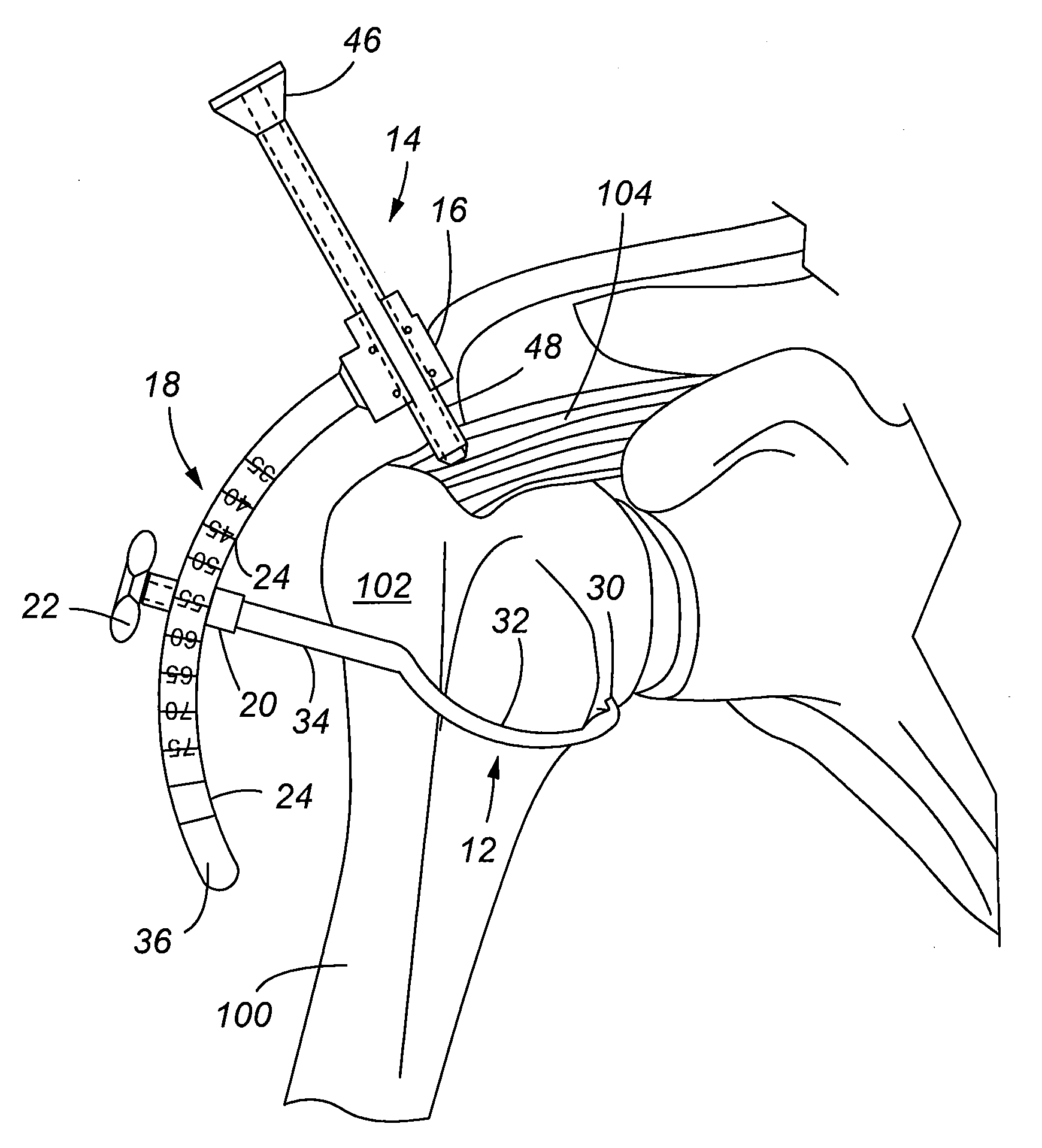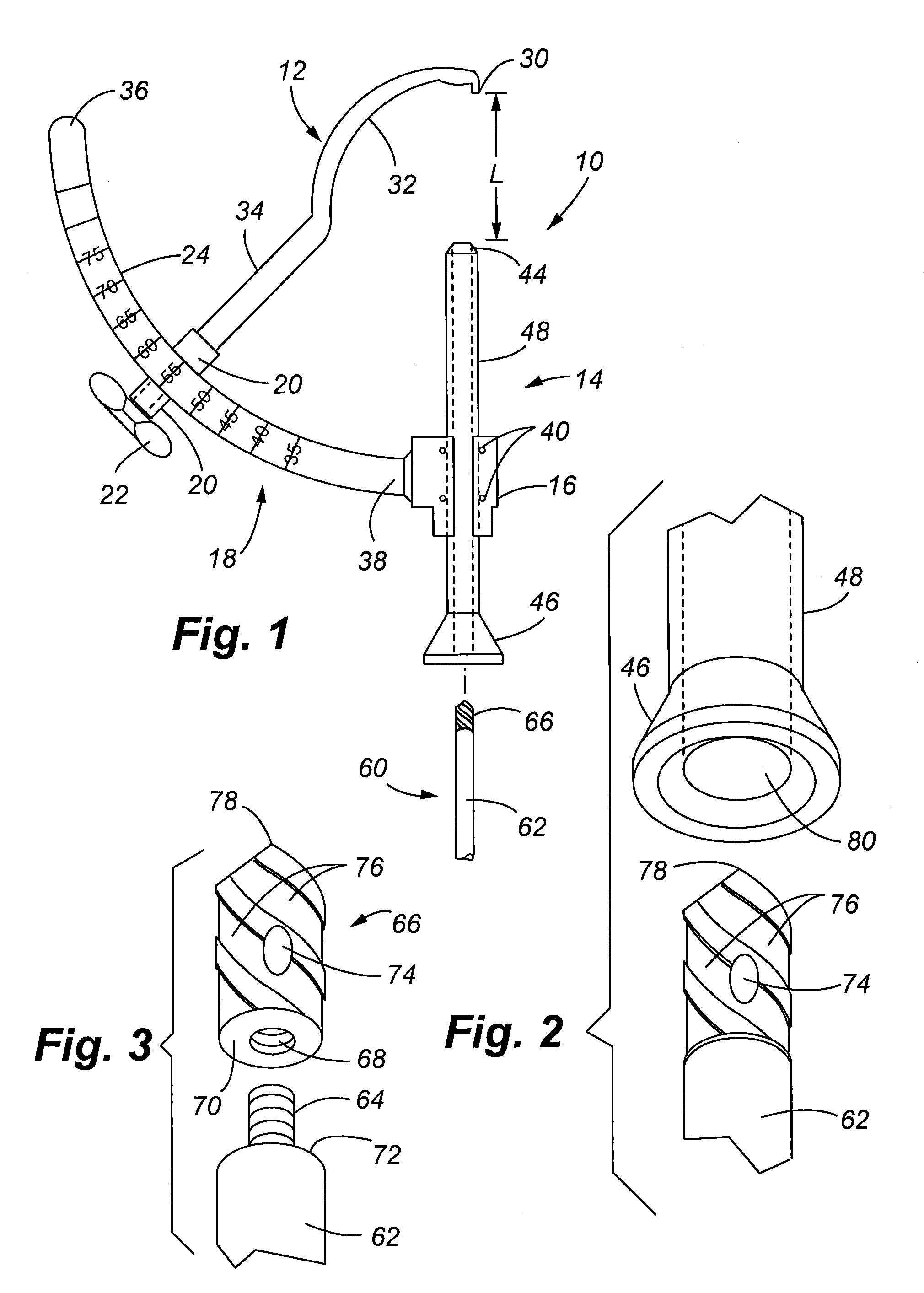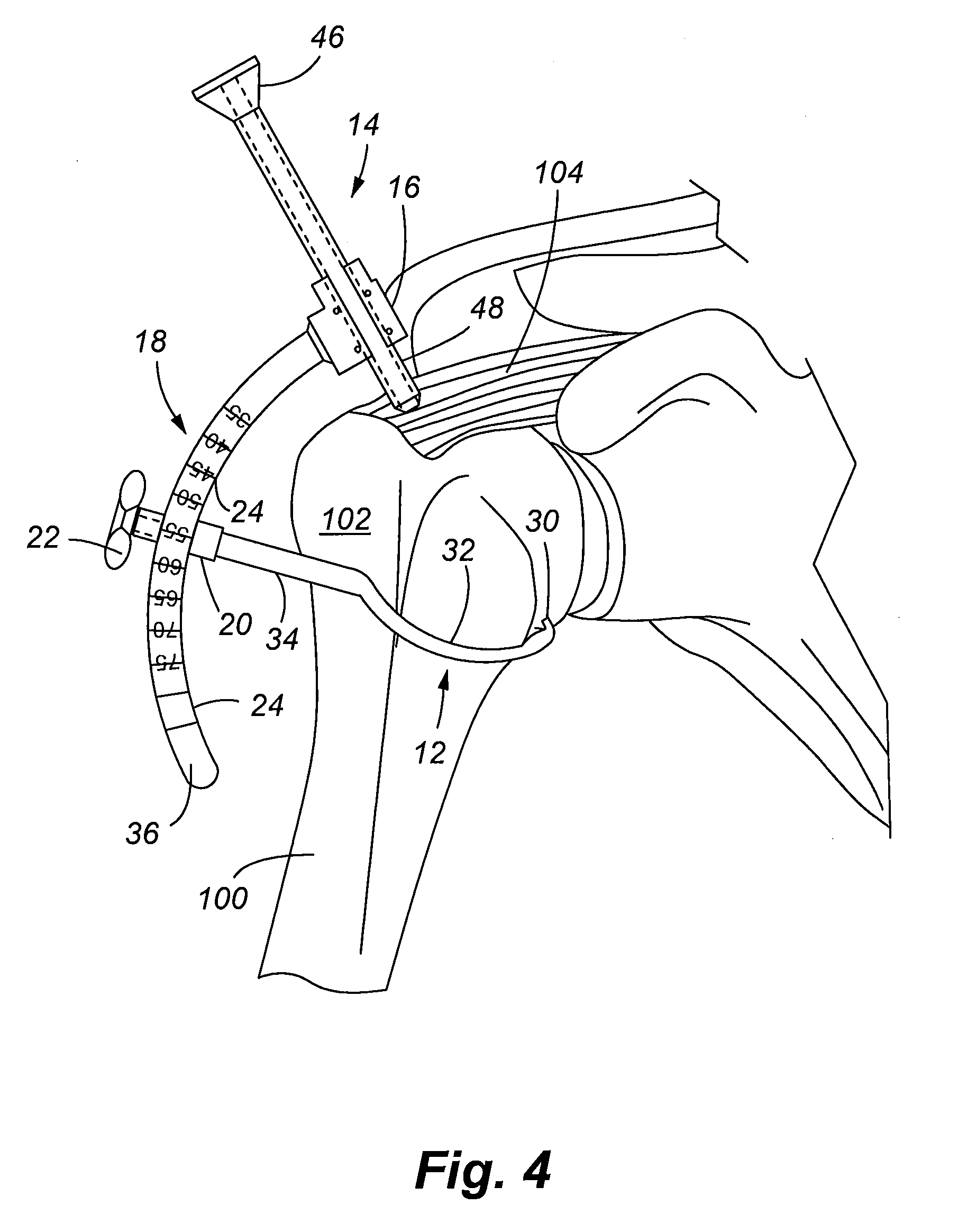Apparatus and method for arthroscopic transhumeral rotator cuff repair
a transhumeral rotator cuff and arthroscopic technology, applied in the field of surgical devices and methods for repair of torn tissue, can solve the problems of plurality of screws, particularly bothersome rotator cuff injuries, and high cost of the procedur
- Summary
- Abstract
- Description
- Claims
- Application Information
AI Technical Summary
Benefits of technology
Problems solved by technology
Method used
Image
Examples
Embodiment Construction
[0047]Referring to FIG. 1, the drill guide assembly 10 of the present invention is illustrated. The drill guide assembly includes a marking hook 12, a drill guide 14, and an angle setting arm 18. The angle setting arm 18 is secured to one lateral side of a drill guide mount 16. The drill guide 14 is received longitudinally through the drill guide mount 16 and is secured through an open slot in the drill guide mount as by a plurality of set screws 40. The marking hook 12 is secured to the angle setting arm 18 by a marking hook mount 20 which is received at a selected slidable location along the angle setting arm 18. A fastener, such as a wing nut or screw 22 tightens the marking hook mount 20 to a selected angular location along the angle setting arm 18. A plurality of angular gradations 24 are marked along the angle setting arm 18 that assists a practitioner in setting the correct location for the marking hook 12. More specifically, a practitioner must determine the length L of the ...
PUM
 Login to View More
Login to View More Abstract
Description
Claims
Application Information
 Login to View More
Login to View More - R&D
- Intellectual Property
- Life Sciences
- Materials
- Tech Scout
- Unparalleled Data Quality
- Higher Quality Content
- 60% Fewer Hallucinations
Browse by: Latest US Patents, China's latest patents, Technical Efficacy Thesaurus, Application Domain, Technology Topic, Popular Technical Reports.
© 2025 PatSnap. All rights reserved.Legal|Privacy policy|Modern Slavery Act Transparency Statement|Sitemap|About US| Contact US: help@patsnap.com



